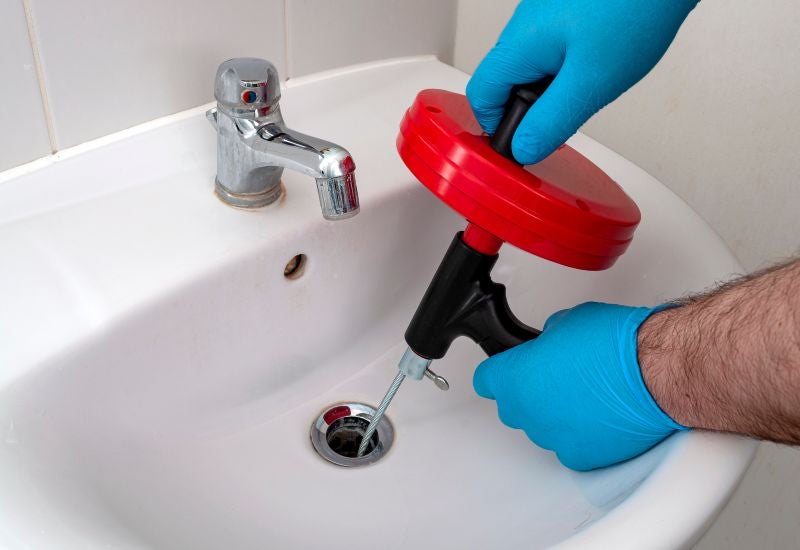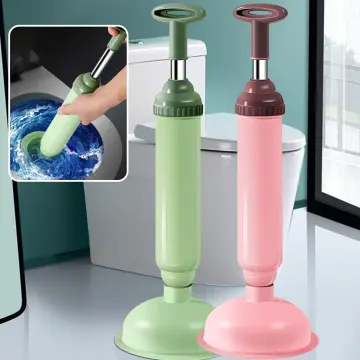Ways to Use Plunger and Drain Cleaners Properly: Pro Guidance
Ways to Use Plunger and Drain Cleaners Properly: Pro Guidance
Blog Article
This post following next on the subject of A Guide to Plungers (and How to Use Them) is unquestionably interesting. Have a go and make your own personal final thoughts.

Introduction
Appropriate upkeep of household drains is vital for protecting against blockages and guaranteeing smooth water circulation. Among the trick tools in every home owner's toolkit is the plunger, alongside different drainpipe cleaners created to deal with persistent clogs properly. This article checks out just how to use bettors and drain cleaners properly to maintain your drains flowing openly.
Section 1: Recognizing Bettors
Sorts of Plungers
There are numerous kinds of bettors offered, each created for various types of drains pipes and obstructs. The most typical kinds include mug bettors, flange plungers, and accordion plungers.
How Plungers Job
Bettors work on the principle of creating pressure and suction to remove obstructions. When properly applied over a drain, they develop a vacuum that can pull out particles or break up clogs.
Choosing the Right Bettor
Choosing the right plunger depends on the kind of drainpipe and the nature of the obstruction. Mug bettors are perfect for sinks and bathtubs, while flange bettors are much better suited for toilets due to their design.
Typical Errors with Bettors
Preventing these mistakes makes sure effective plunging: improper seal around the drain, not enough force, and unclear surrounding debris.
Section 2: Using Plungers Effectively
Preparation
Before diving, make certain the bettor covers the drainpipe totally and creates a tight seal. Clear any kind of noticeable particles around the drainpipe opening.
Technique
Start with gentle plunging motions to build suction. Increase stress gradually, using a consistent rhythm. Repeat as necessary up until the drainpipe gets rid of.
Troubleshooting Tips
If diving doesn't function, try readjusting the seal, applying oil jelly for a much better seal, or using a different type of bettor.
Area 3: Comprehending Drain Cleaning Company
Sorts Of Drain Cleaners
Drain cleansers can be chemical or enzymatic. Chemical cleaners use solid chemicals to liquify clogs, while chemical cleaners use natural enzymes to break down organic matter.
Just How Drainpipe Cleansers Work
Chemical cleaners react with obstructions to liquify them, while enzymatic cleaners break down natural products like hair and grease without harming pipelines.
Safety and security Factors to consider
Always put on handwear covers and eye security when using chemical drainpipe cleaners. Guarantee adequate air flow and follow supplier directions thoroughly.
Eco-Friendly Alternatives
Consider utilizing vinegar and cooking soft drink or enzyme-based cleaners for eco-friendly choices that are more secure for pipes and the atmosphere.
Area 4: Making Use Of Drainpipe Cleaners Effectively
Application Methods
Put chemical cleaners straight into the drainpipe opening. Enable them to help the recommended time before flushing with hot water. Enzymatic cleansers should rest overnight.
Precautions
Stay clear of blending different sorts of cleaners, as this can produce toxic fumes. Never ever utilize chemical cleaners in conjunction with a bettor, as spilling can happen.
Handling Stubborn Blockages
For relentless clogs, take into consideration using a pipes serpent or calling a specialist plumber to stop damage to pipes.
Verdict
In conclusion, understanding exactly how to use bettors and drainpipe cleaners successfully is vital for maintaining healthy and balanced pipes systems. By choosing the right devices and strategies, property owners can tackle small clogs and stop major pipes problems down the line.
How To Properly Use A Plumbing Snake To Clear Drains
When any drain clogs in our home arise, we tend to gravitate toward the plunger and little else. In cases where the plunger and its vacuum-created pressure are not able to clear clogs, many immediately move to harmful chemicals or simply call their plumber to fix the issue.
we’re happy to help with all drain cleaning needs and concerns. This includes informing you on a few other home remedies you may have at your disposal for minor to moderate clogs, one of which is the use of a plumbing snake. Many people have never used one of these before – let’s go over the steps to take when your drain clogs and you have a plumbing snake available.
Attempt Plunger Use
The first step here, as we noted above, should indeed be to grab your plunger when you notice a drain clog and attempt to resolve it this way. If you’re unsure how to use a particular type of plunger, our plumbers can answer any questions you have. If this doesn’t do the trick, however, you move on to the snake.
Locate And Prepare Snake
A plumbing snake is a metal or plastic device that’s generally about a quarter of an inch thick. It’s design with significant extensions, meant to reach down into your clogged drain and push the clog out. Snakes also contain drain augers that will latch onto and push stubborn blockages.
If your plunger doesn’t clear a clog, locate your snake and bring it to the drain in question. We also recommend keeping a bucket nearby to collect the clog once you pull it out, plus we’d advise wearing goggles and possibly protective gloves.
Feed Snake
Once you’re ready to go, feed the snake slowly down the drain, using the crank device it comes with to keep it moving until it finds the clog. Once this happens, much of the clog will be latched onto the coil so you can pull it out, while the rest will simply break up and flow downward.
Detach Debris
Remove the snake slowly from the drain, and once you’ve done so, pick off any debris that’s stuck to the coil. This is another area where wearing gloves is a must.
Flush Drain
Finally, take a few minutes to ensure the snake has done its job correctly. If you’ve been using it on a toilet, flush the toilet a couple times and make sure everything flows well. If you’ve used it on a different drain, flush it with some room temperature water.
https://www.mybuddytheplumber.com/blog/how-to-properly-use-a-plumbing-snake-to-clear-drains/

Application Methods
Put chemical cleaners straight into the drainpipe opening. Enable them to help the recommended time before flushing with hot water. Enzymatic cleansers should rest overnight.
Precautions
Stay clear of blending different sorts of cleaners, as this can produce toxic fumes. Never ever utilize chemical cleaners in conjunction with a bettor, as spilling can happen.
Handling Stubborn Blockages
For relentless clogs, take into consideration using a pipes serpent or calling a specialist plumber to stop damage to pipes.
Verdict
In conclusion, understanding exactly how to use bettors and drainpipe cleaners successfully is vital for maintaining healthy and balanced pipes systems. By choosing the right devices and strategies, property owners can tackle small clogs and stop major pipes problems down the line.
How To Properly Use A Plumbing Snake To Clear Drains
When any drain clogs in our home arise, we tend to gravitate toward the plunger and little else. In cases where the plunger and its vacuum-created pressure are not able to clear clogs, many immediately move to harmful chemicals or simply call their plumber to fix the issue.
we’re happy to help with all drain cleaning needs and concerns. This includes informing you on a few other home remedies you may have at your disposal for minor to moderate clogs, one of which is the use of a plumbing snake. Many people have never used one of these before – let’s go over the steps to take when your drain clogs and you have a plumbing snake available.
Attempt Plunger Use
The first step here, as we noted above, should indeed be to grab your plunger when you notice a drain clog and attempt to resolve it this way. If you’re unsure how to use a particular type of plunger, our plumbers can answer any questions you have. If this doesn’t do the trick, however, you move on to the snake.
Locate And Prepare Snake
A plumbing snake is a metal or plastic device that’s generally about a quarter of an inch thick. It’s design with significant extensions, meant to reach down into your clogged drain and push the clog out. Snakes also contain drain augers that will latch onto and push stubborn blockages.
If your plunger doesn’t clear a clog, locate your snake and bring it to the drain in question. We also recommend keeping a bucket nearby to collect the clog once you pull it out, plus we’d advise wearing goggles and possibly protective gloves.
Feed Snake
Once you’re ready to go, feed the snake slowly down the drain, using the crank device it comes with to keep it moving until it finds the clog. Once this happens, much of the clog will be latched onto the coil so you can pull it out, while the rest will simply break up and flow downward.
Detach Debris
Remove the snake slowly from the drain, and once you’ve done so, pick off any debris that’s stuck to the coil. This is another area where wearing gloves is a must.
Flush Drain
Finally, take a few minutes to ensure the snake has done its job correctly. If you’ve been using it on a toilet, flush the toilet a couple times and make sure everything flows well. If you’ve used it on a different drain, flush it with some room temperature water.
https://www.mybuddytheplumber.com/blog/how-to-properly-use-a-plumbing-snake-to-clear-drains/

I discovered that blog post about Tips on How to Effectively Use a Plunger when doing a search on the search engines. Enjoyed reading our piece of writing? Please quickly share it. Help other people find it. Thank-you for your time spent reading it.
Schedule Appointment Now Report this page